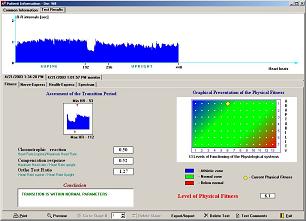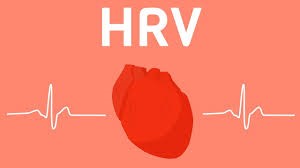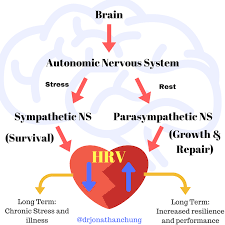Heart Rate Variability Testing
Heart Rate Variability Testing: Harnessing the Benefits for Health Management
Introduction
Heart rate variability (HRV) testing is a non-invasive method that assesses the variations in time intervals between consecutive heartbeats. By measuring these fluctuations, HRV testing provides valuable insights into the autonomic nervous system’s activity, overall cardiovascular health, and stress response. In this article, we explore the benefits of HRV testing for individuals with health problems and discuss the conclusions that can be drawn from this test.
Understanding Heart Rate Variability Testing
Heart rate variability refers to the variation in the time intervals between successive heartbeats. The autonomic nervous system, comprised of the sympathetic and parasympathetic branches, regulates heart rate and responds to stressors. HRV testing measures these fluctuations, typically using electrocardiogram (ECG) data, to evaluate the balance and flexibility of the autonomic nervous system.
Benefits of HRV Testing for People with Health Problems
- Stress Assessment and Management: HRV testing is particularly valuable in assessing an individual’s stress response. It provides insights into the balance between sympathetic (fight-or-flight) and parasympathetic (rest-and-digest) activity. By monitoring HRV patterns, individuals can gain a better understanding of their stress levels and implement effective stress management techniques to support overall well-being.
- Cardiovascular Health Evaluation: HRV testing offers an indirect evaluation of cardiovascular health. Reduced HRV is associated with an increased risk of cardiovascular diseases such as hypertension, heart disease, and arrhythmias. By assessing HRV, individuals can identify potential imbalances and take proactive steps to improve heart health through lifestyle modifications, exercise, and stress reduction techniques.
- Autonomic Nervous System Function: HRV testing provides insights into the functioning of the autonomic nervous system, which plays a crucial role in regulating various bodily functions. Imbalances in autonomic function can be associated with conditions such as digestive disorders, sleep disturbances, hormonal imbalances, and immune system dysregulation. HRV testing helps identify potential autonomic dysfunction and guide targeted interventions.
- Training Optimization for Athletes: HRV testing is utilized in sports performance monitoring and optimization. It helps athletes determine their readiness for training, assess recovery levels, and tailor exercise intensity and duration to prevent overtraining and injury. By tracking HRV patterns, athletes can optimize their training regimens to enhance performance while minimizing the risk of burnout.
A Typical HRV Report
 At the Da Vinci Natural Health Centre we use the Orthostatic Test when measuring HRV. During the test, the patient rises from a supine to a standing position. Normally this causes an immediate increase in heart rate and reaches its maximum level at about 15th heartbeat after beginning to stand. It is followed by a relative bradycardia that reaches its maximum around the 30th heartbeat. The phenomena can be quantified as the 30:15 ratio, which is the ratio of the longest R-R interval around the 30th heartbeat to the shortest interval around the 15th heartbeat.
At the Da Vinci Natural Health Centre we use the Orthostatic Test when measuring HRV. During the test, the patient rises from a supine to a standing position. Normally this causes an immediate increase in heart rate and reaches its maximum level at about 15th heartbeat after beginning to stand. It is followed by a relative bradycardia that reaches its maximum around the 30th heartbeat. The phenomena can be quantified as the 30:15 ratio, which is the ratio of the longest R-R interval around the 30th heartbeat to the shortest interval around the 15th heartbeat.
Conclusions Drawn from HRV Testing
- Sympathetic-Parasympathetic Balance: HRV testing provides insights into the balance between sympathetic and parasympathetic nervous system activity. Higher HRV indicates a healthy balance between these branches, promoting resilience, adaptability, and optimal physiological function. Reduced HRV may suggest an imbalance, indicating the need for interventions to restore autonomic equilibrium.
- General Health Status: HRV patterns can reflect an individual’s overall health status. Reduced HRV is associated with chronic conditions, inflammation, and increased disease risk. Monitoring HRV can assist in tracking changes and evaluating the effectiveness of health interventions and lifestyle modifications.
- Stress Resilience: HRV testing helps assess an individual’s resilience to stress. Higher HRV indicates better adaptability and a more efficient stress response system. Lower HRV may suggest a reduced ability to cope with stressors, highlighting the need for stress management strategies and lifestyle adjustments.
- Treatment Response Evaluation: HRV testing can be used to assess the effectiveness of interventions. By monitoring HRV over time, individuals and healthcare professionals can gauge how interventions, such as stress reduction techniques, exercise, medication, or lifestyle changes, impact autonomic function and overall health.
Videos to Watch:
Understanding Heart Rate Variability
Heart Rate Variability Explained
References:
- Kawachi I, Sparrow D, Vokonas PS, Weiss ST. Decreased heart rate variability in men with phobic anxiety. Am J Cardiol 1995; 75: 882-885.
- Kristal-Boneh E, Raifel M, Froom P, Ribak J. Heart rate variability in health and disease. Scan J Work Environ Health 1995; 21: 85-95.
- Offerhaus RE. Heart rate variability in psychiatry. In: RJ Kitney, Rompelman O (eds). The Study of Heart Rate Variability. Oxford: OxfordUniversity Press, 1980: 225-238.
- Sloan RP, Shapiro PA, Bigger T Jr, Bagiella E, Steinman RC, Gorman JM. Cardiac autonomic control and hostility in healthy subjects. Am J Cardiol 1994; 74: 298-300.
- Task Force of the European Society of Cardiology and the North American Society of Pacing and Electrophysiology. Heart rate variability: standards of measurement, physiological interpretation and clinical use. Circulation 1996; 93: 1043-65.
- Yeragani VK, Balon R, Pohl R, Ramesh C, Glitz D, Weinberg P, Merlos B. Decreased R-R variance in panic disorder patients. Acta Psychiatr Scand 1990; 81: 554-559.
- Yeragani VK, Pohl R, Berger R, Balon R, Ramesh C, Glitz D, Srinivasan K, Weinberg P. Decreased heart rate variability in panic disorder patients: a study of power-spectral analysis of heart rate. Psychiatry Res 1993; 46: 89-103.

Contact us or book an appointment now.








